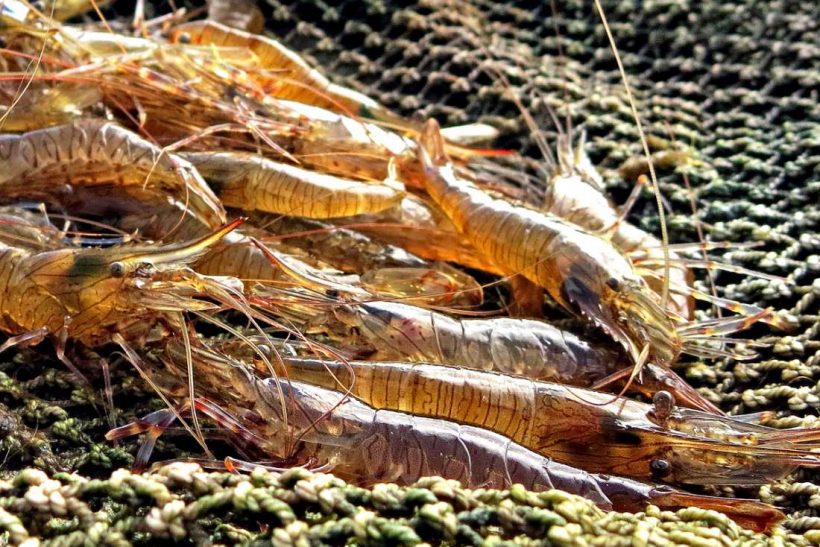Inshore fishermen on the west and north-west coasts of Ireland are facing a bleak winter due to the failures of both the shrimp and velvet crab fisheries, reports Pauric Gallagher. This was compounded by the failure of brown crabs to arrive in any quantity inshore on the north-west coast, and what can only be described as a mediocre lobster fishery this summer.
This year’s shrimp season is being defined as one of the worst on record, so much so that many inshore fishermen on the Donegal and Mayo coasts had already taken their pots ashore only one week into the fishery.
A poor shrimp season is not uncommon in Irish waters, they have happened occasionally in the past, but the reasons behind the intermittent drop in shrimp numbers is unknown for certain. Some fishermen believe that the cause may be down to the severity of a previous years’ algal bloom which could have killed off much of the breeding and juvenile stock which would have been at a marketable size the following year. Others believe that this season’s collapse is due to the previous year’s extremely
wet winter followed by a wet spring and summer this year.
During a successful season, catches of Irish shrimps average between 400 and 600 tonnes annually, the bulk of which are
destined for markets on the continent, mainly France and Spain.
Due to the failure of this season’s shrimp fishery, many fishermen
were relying on the velvet crab fishery to provide an income, but
it too has failed to produce any significant catches on the northwest coast. This, coupled with a poor showing of brown crab in inshore waters this summer, and a poorer that average lobster season, leaves inshore fishermen with little else to diversify into in the months leading up to the winter period.
Previously considered a pest species, the velvet crab is now a commercially-significant export species for Ireland and UK fishermen. Velvet crabs live for four to six years and recruit to the fishery at around three years. They reach maturity at approximately 18 months. In contrast to brown crabs, which undertake extensive migrations, velvet crabs are not thought to do so, and rarely move further than a few hundred metres from the area they become established in.
The reasons for such poor numbers in the velvet crab fishery this season may be due to low water temperatures and/or the excessive amounts of fresh water running into estuaries and bays where the velvet crabs reside.
Whatever the circumstances are behind the failures of these
important fisheries for the inshore sector this year, it is hoped that next year these fisheries will have rebounded.
Read more from Fishing News here.


Inshore fishermen on the west and north-west coasts of Ireland are facing a bleak winter due to the failures of both the shrimp and velvet crab fisheries, reports Pauric Gallagher. This was compounded by the failure of brown crabs to arrive in any quantity inshore on the north-west coast, and what can only be described as a mediocre lobster fishery this summer. This year’s shrimp season is being defined as one of the worst on record, so much so that many inshore fishermen on the Donegal and Mayo coasts had already taken their pots ashore only one week into the fishery. A poor shrimp season is not uncommon in Irish waters, they have happened occasionally in the past, but the reasons behind the intermittent drop in shrimp numbers is unknown for certain. Some fishermen believe that the cause may be down to the severity of a previous years’ algal bloom which could have killed off much of the breeding and juvenile stock which would have been at a marketable size the following year. Others believe that this season’s collapse is due to the previous year’s extremely wet winter followed by a wet spring and summer this year. During a successful season, catches of Irish shrimps average between 400 and 600 tonnes annually, the bulk of which are destined for markets on the continent, mainly France and Spain. Due to the failure of this season’s shrimp fishery, many fishermen were relying on the velvet crab fishery to provide an income, but it too has failed to produce any significant catches on the northwest coast. This, coupled with a poor showing of brown crab in inshore waters this summer, and a poorer that average lobster season, leaves inshore fishermen with little else to diversify into in the months leading up to the winter period. Previously considered a pest species, the velvet crab is now a commercially-significant export species for Ireland and UK fishermen. Velvet crabs live for four to six years and recruit to the fishery at around three years. They reach maturity at approximately 18 months. In contrast to brown crabs, which undertake extensive migrations, velvet crabs are not thought to do so, and rarely move further than a few hundred metres from the area they become established in. The reasons for such poor numbers in the velvet crab fishery this season may be due to low water temperatures and/or the excessive amounts of fresh water running into estuaries and bays where the velvet crabs reside. Whatever the circumstances are behind the failures of these important fisheries for the inshore sector this year, it is hoped that next year these fisheries will have rebounded. Read more from Fishing News here.




